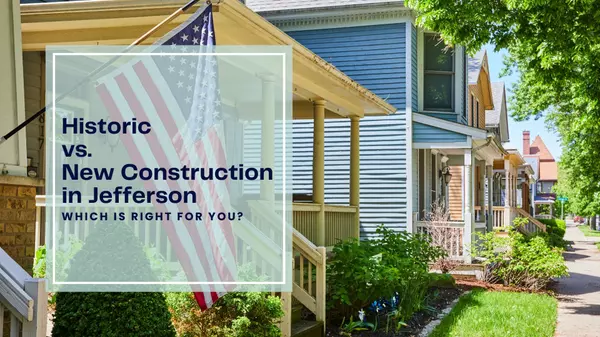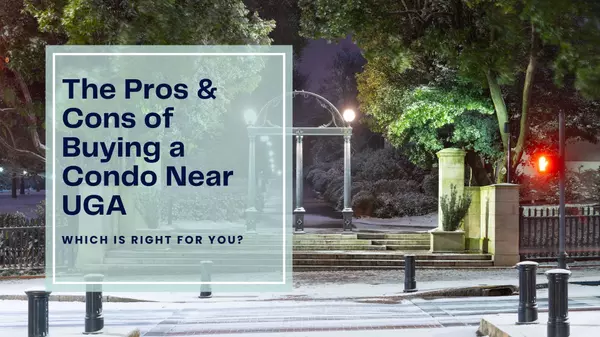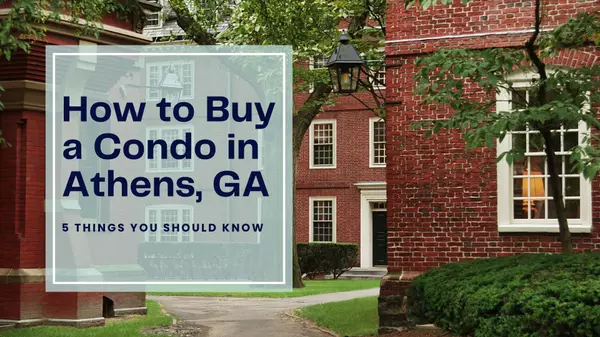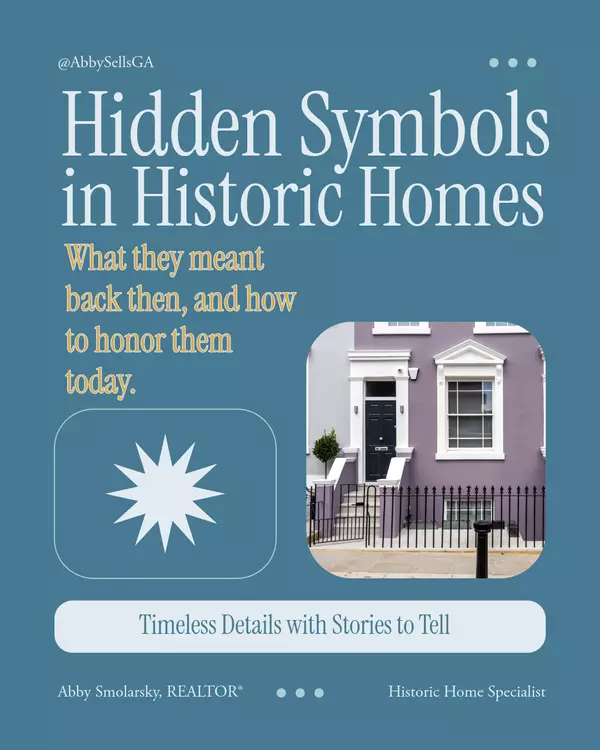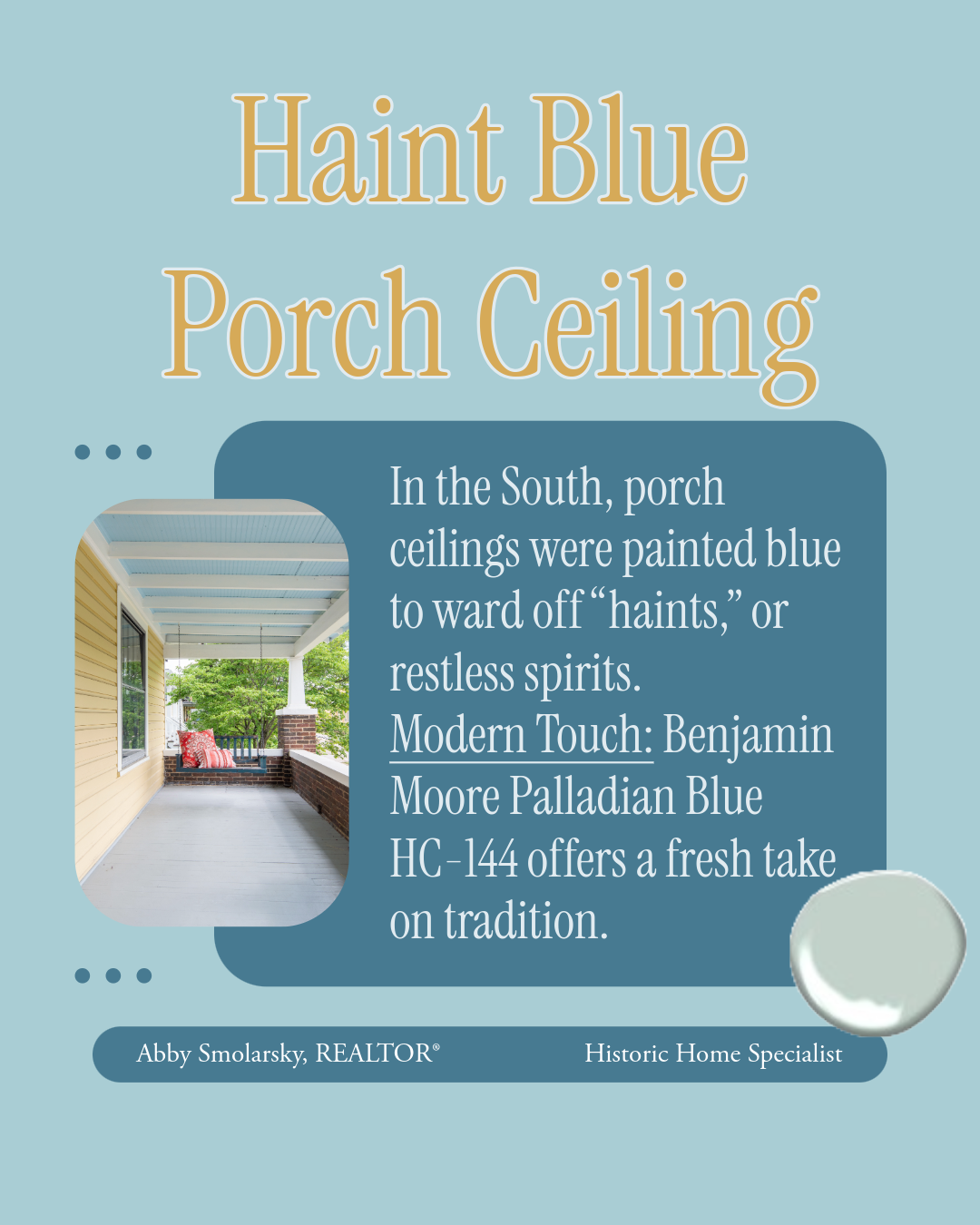The Secret Language of Historic Homes: 5 Symbols and What They Really Mean
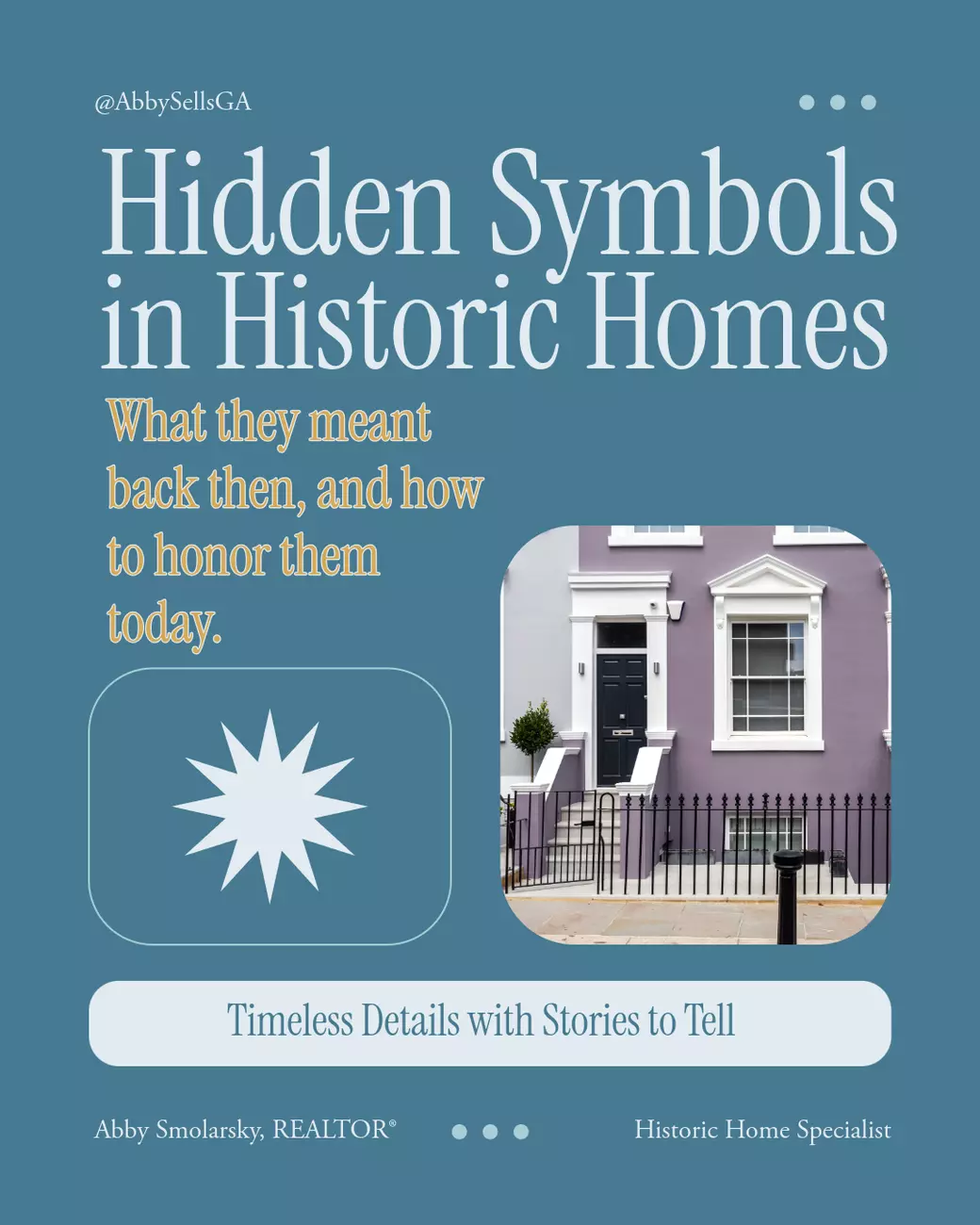
There's something undeniably special about historic homes...the way they feel, the stories they hold, and the little details that seem to whisper, "This house has lived."
Some of these details are more than decorative; they carry meanings that stretch across generations. As a lifelong Georgian, a real estate agent, and someone with a deep love of historic preservation and interior design, I find these traditions endlessly fascinating.
Let's take a closer look at five symbols often found in Southern and early American homes...and what they meant then versus how we might honor them now.
Red Front Door: A Signal of Financial Freedom
In colongial America and parts of Scotland, painting your front door red was a proud declaration: the mortgage has been paid in full. It was a subtle yet powerful signatl to neighbors and passersby that the family was free from debt.
Design Tip: If you want to give a nod to tradition with a modern twist, I love using Benjamin Moore Caliente AF-290, which is a rich, classic red that pairs beautifully with crsip white trim and aged brick.
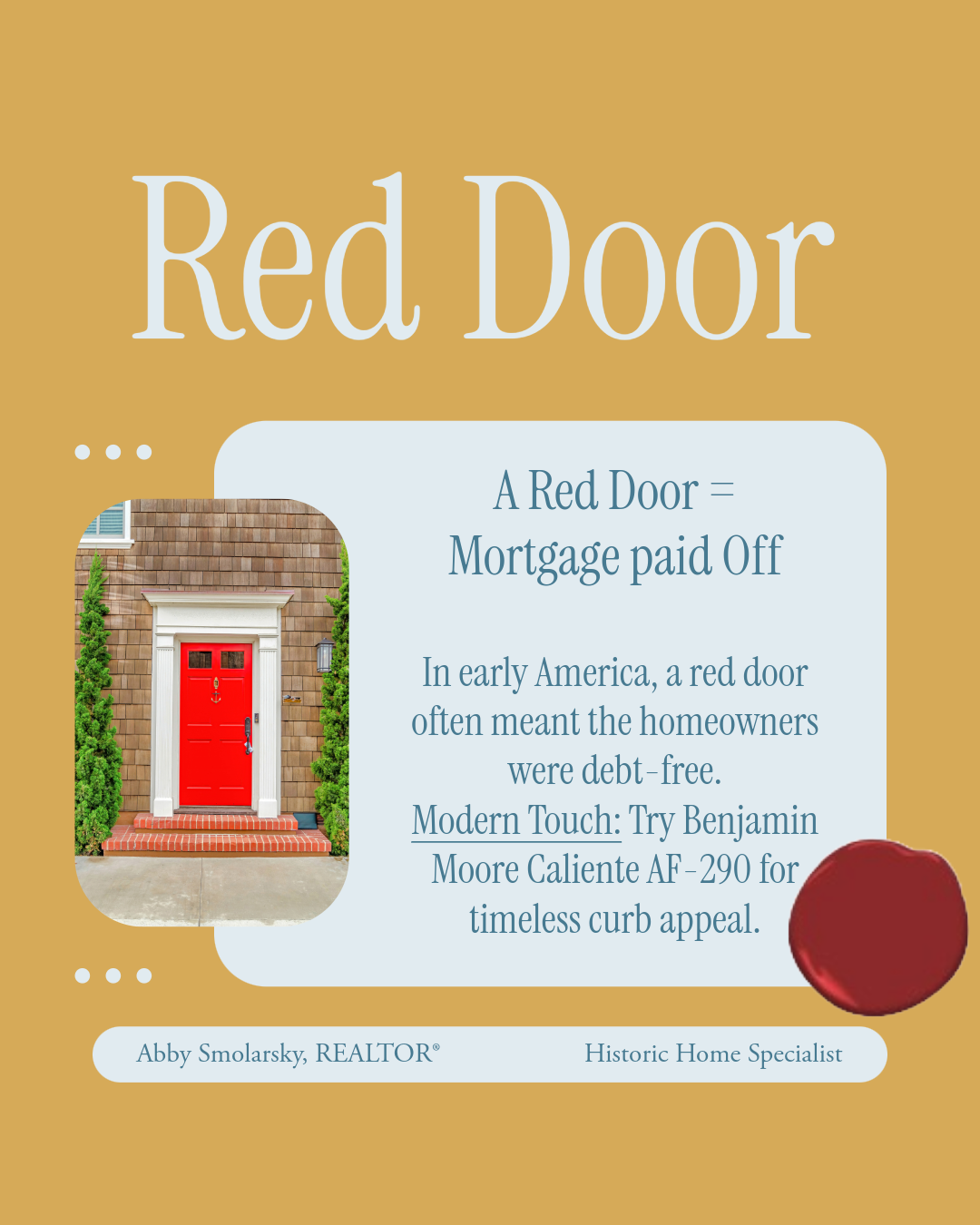
The Freedom Flyer: A Mortgage Milestone
After World War II, homeowners began mounting cast iron eagle plaques (often above the front door or garage) to celebrate paying off their mortgage. Known as a "Freedom Flyer," the eagle stood for strength, independence, and financial accomplishment.
Modern Touch: You can still find reproduction eagle plaques today. They make a great conversation piece and a subtle symbol of pride...especially for vintage-loving homeowners.
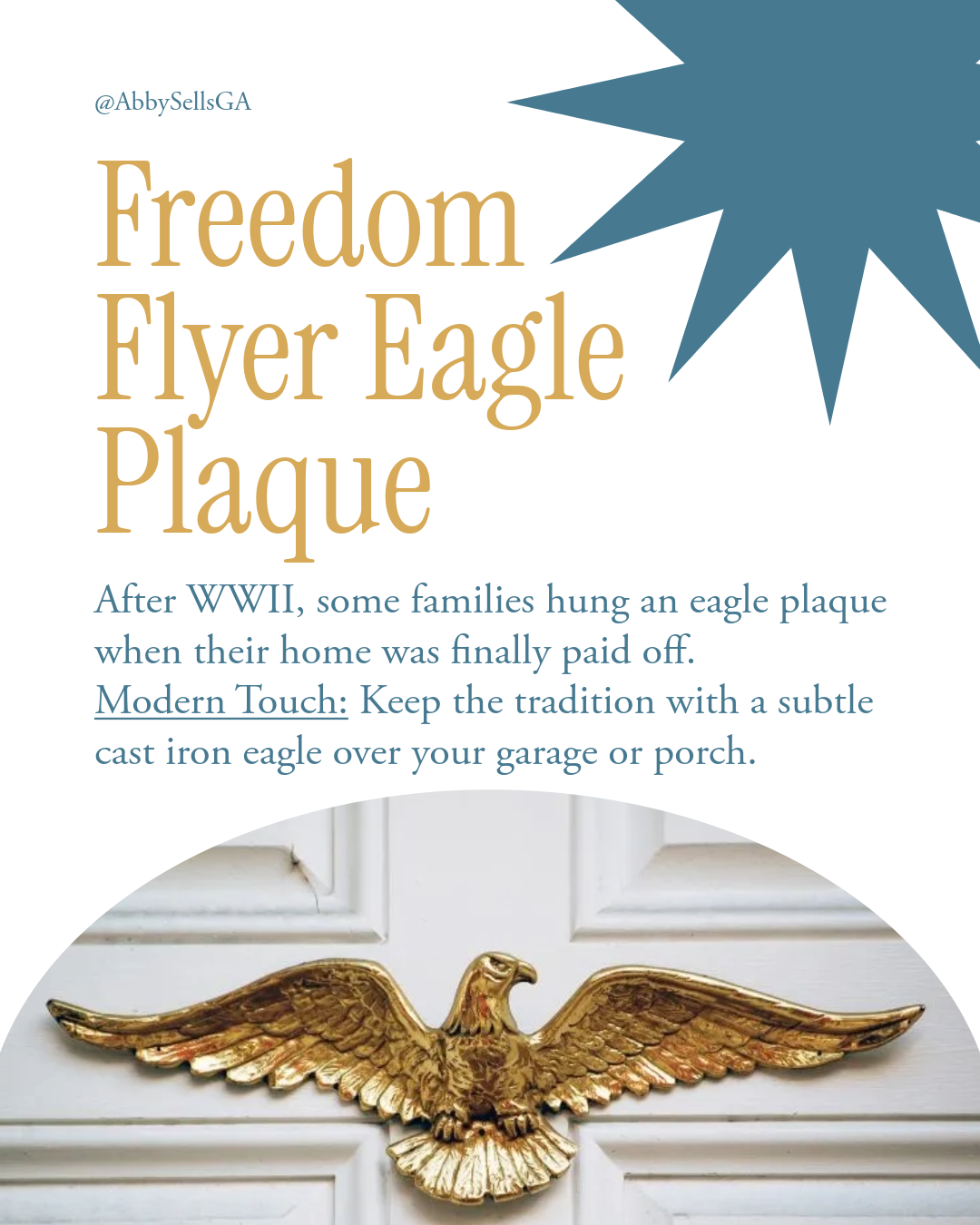
Haint Blue Porch Ceilings: More Than Just Pretty Paint
A hallmark of Southern architecture, haint blue ceilings originated with the Gullah Geechee poeple of the Lowcountry. They believed the soft blue color would repel or confuse "haints" - spirits who might otherwise enter the home.
Design Tip: Benjamin Moore Palladian Blue HC-144 is a timeless, breezy choice for porch ceilings. Bonus: many folks still swear it helps keep bugs away.
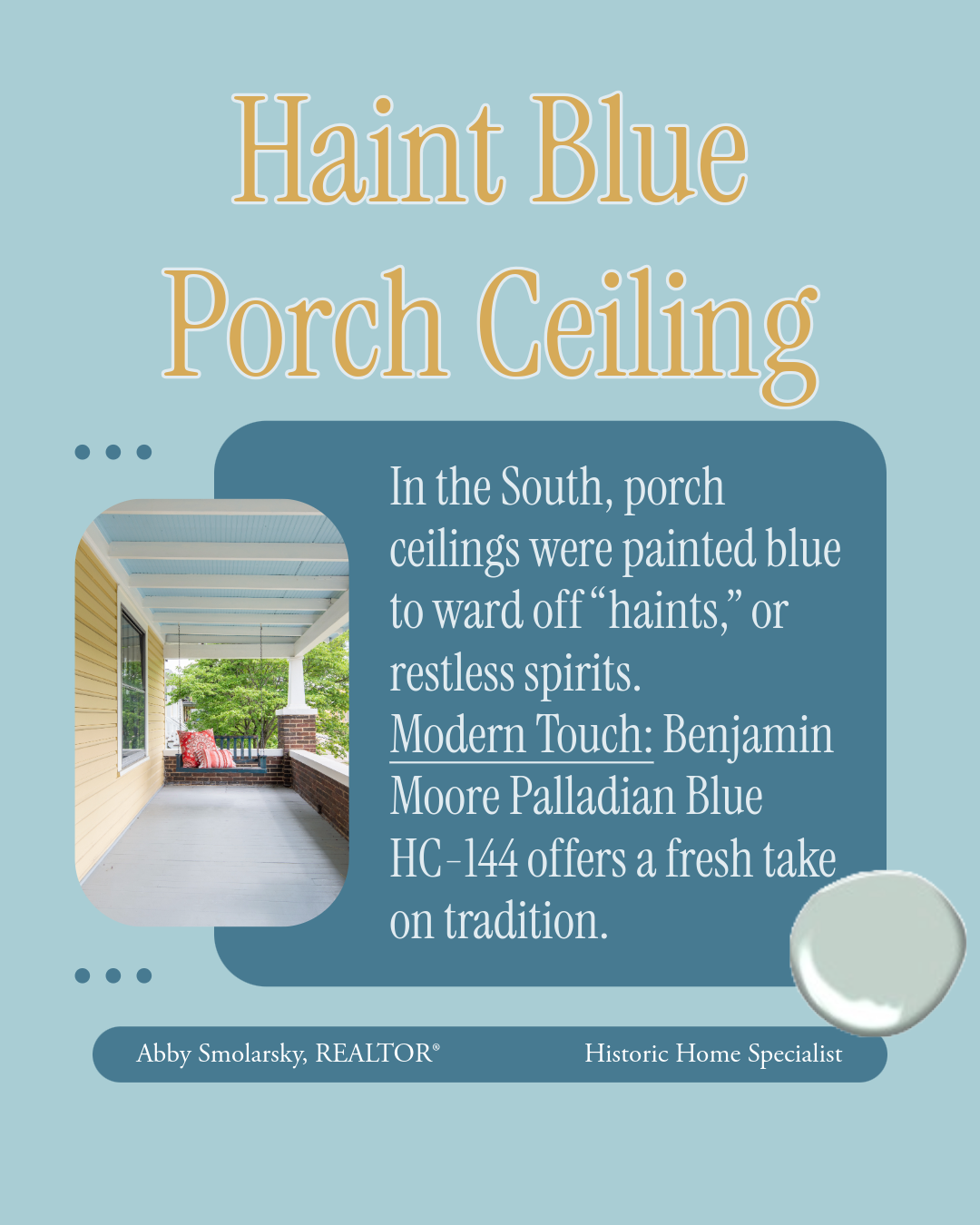
Brass Crickets by the Hearth: A Token of Luck
This tiny detail might be missed if you're not looking for it: a brass cricket, quietly resting on the hearth. In folklore (particularly in English and Chinese traditions), crickets symbolized good fortune, warmth, and household protection.
Modern Touch: I like to tuck one on a mantel or a bookshelf as a subtle nod to the past. It's a whimsical way to bring heritage into your home's story.
The Newel Post "Mortgage Button": Fact or Folklore?
One of my favorite old-house legends is the idea of a "mortgage button" embedded in the staircase's newel post. Though it's more myth than proven practice, the story goes that once a mortgage was paid, the deed was tucked inside the post or a decorative cap was installed to mark the milestone.
Design Tip: Whether or not the story's true, you can add your own modern version with a custome newel post cap in brass or carved wood, blending function and folklore.
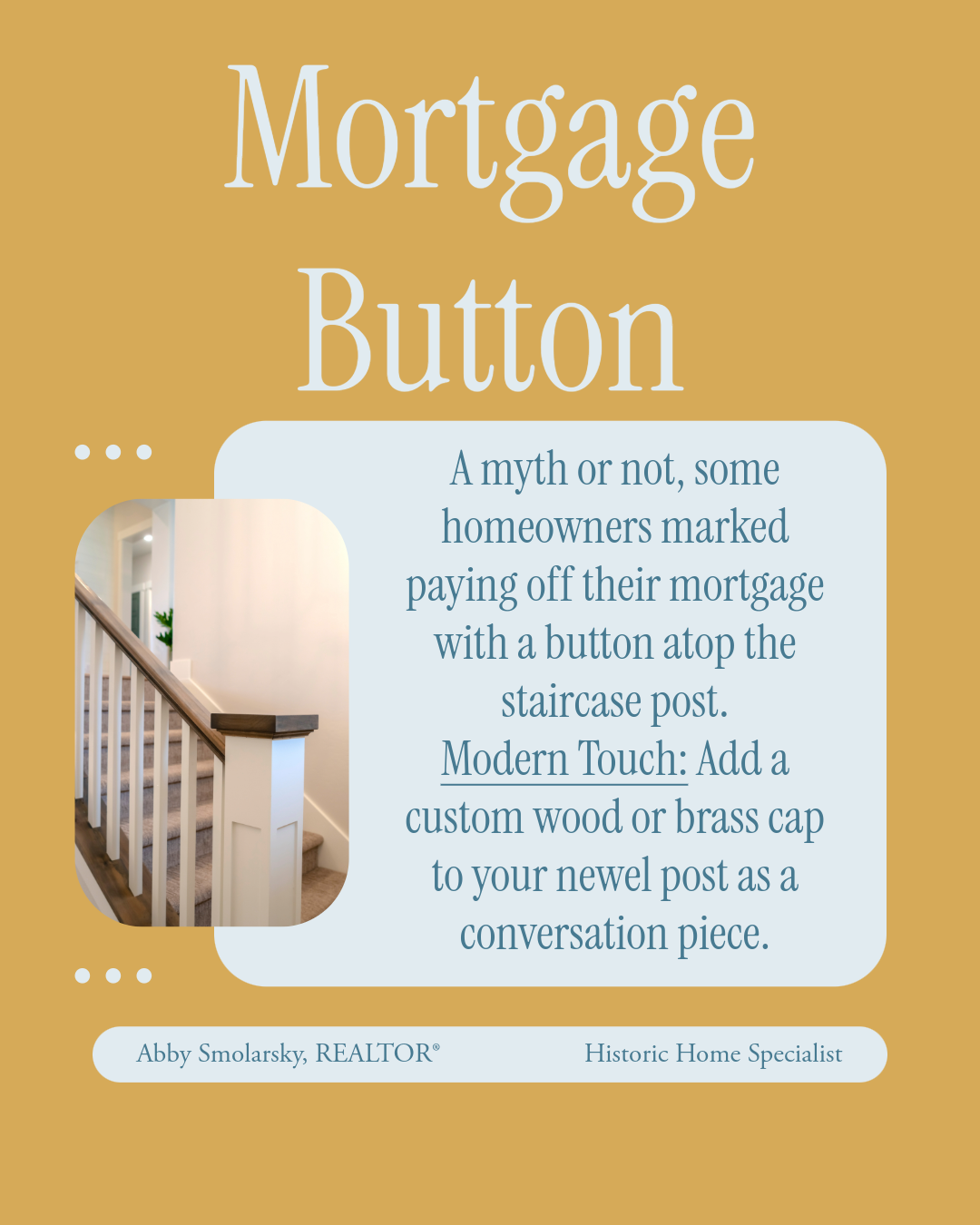
Final Thoughts: Design With Meaning
These symbols aren't just charming; they remind us that homes are personal, hard-earned, and full of history. Whether you live in a centuries-old farmhouse or a newly built cottage, you can honor tradition through thoughtful design and intentional choices.
Looking to buy or sell a home in northeast Georgia? I'd love to help you find a plase with history and help you make it your own.
Contact me: Abby.Smolarsky@gmail.com
Serving North Georgia | @AbbySellsGA
Categories
Recent Posts


